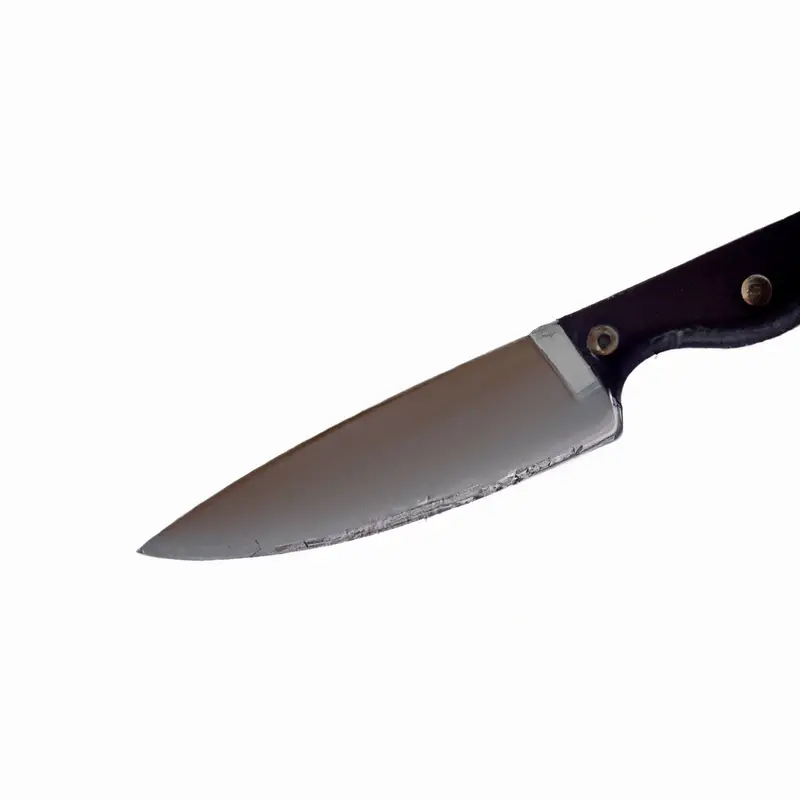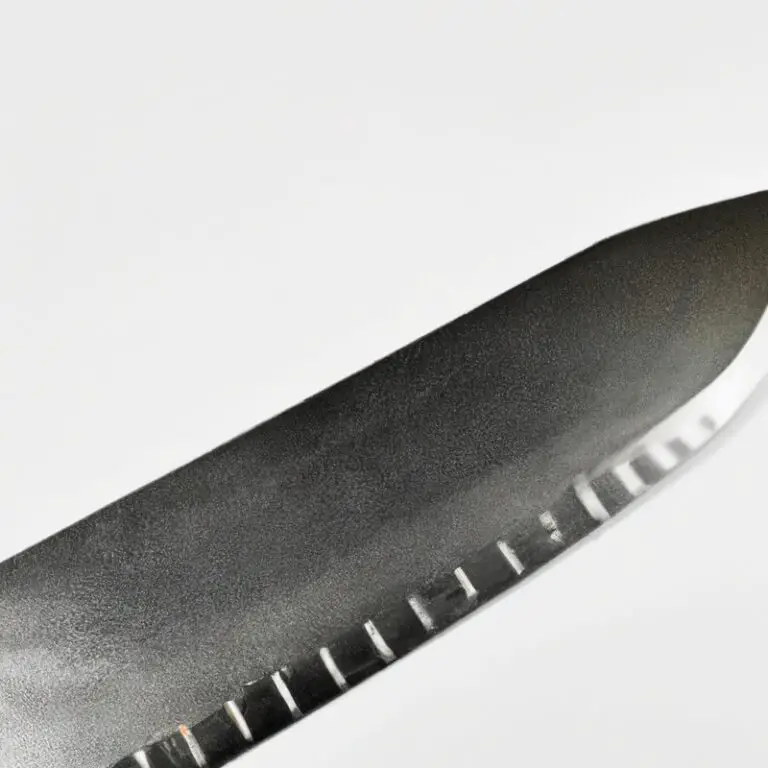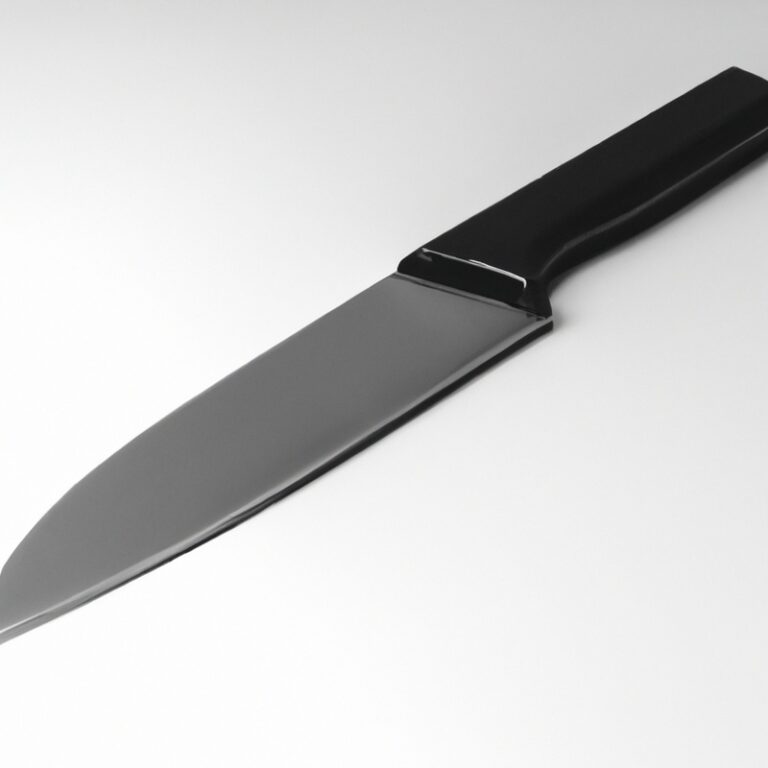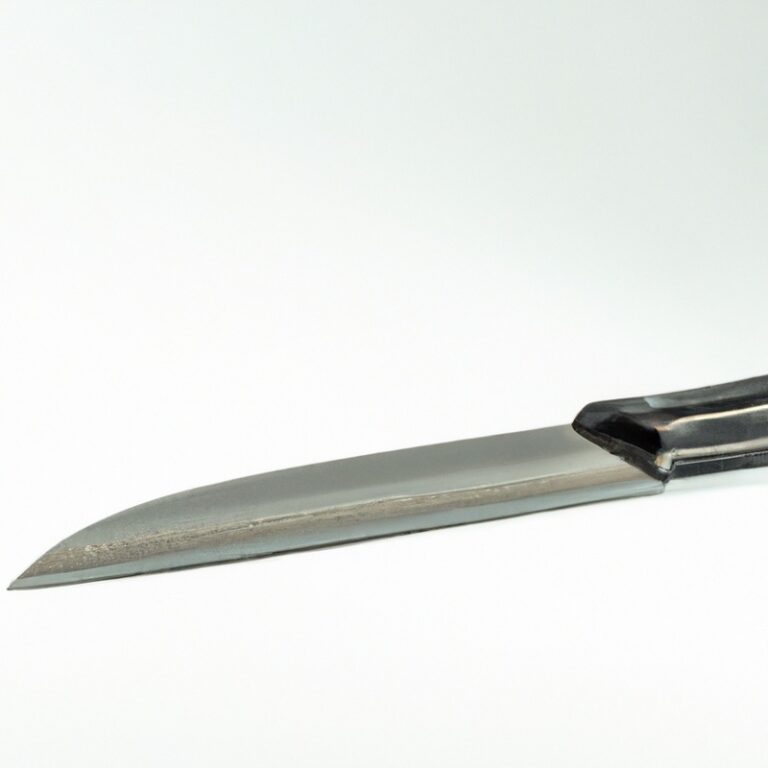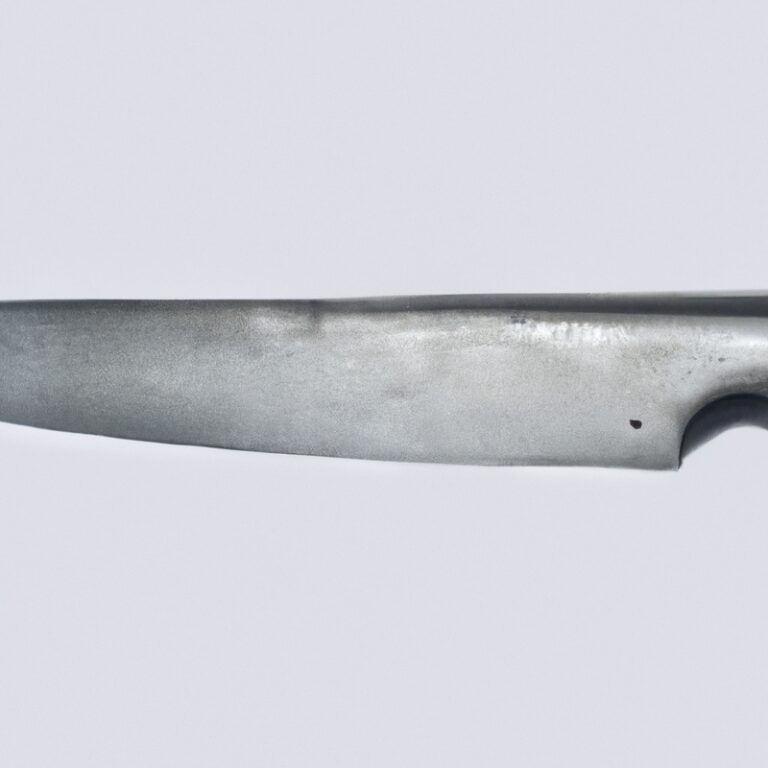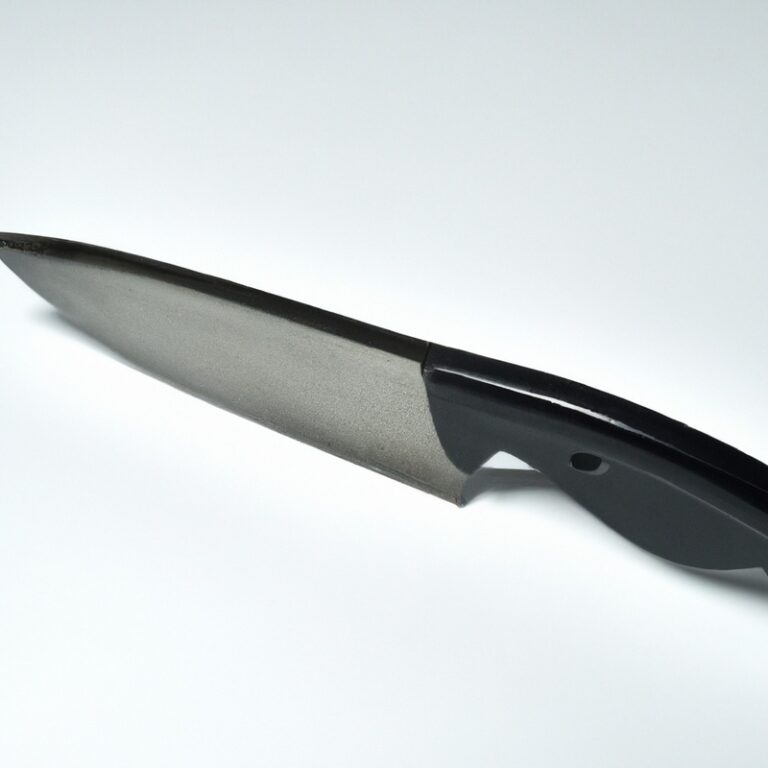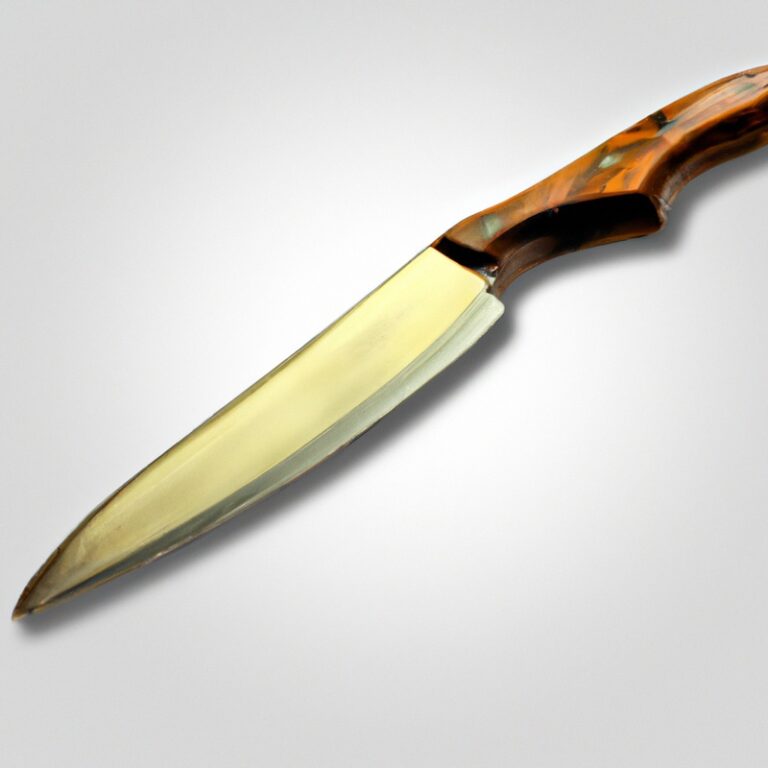How Can a Serrated Knife Be Beneficial For Cutting Through Frozen Food?
Key Takeaways:
- Serrated knives have saw-like edges that provide better grip and control when cutting through frozen food.
- The jagged edges of a serrated knife help prevent the blade from slipping on the hard surface of frozen food.
- Serrated knives can easily slice through frozen food without crushing or shattering it.
- The teeth on a serrated knife create small perforations in the frozen food, making it easier to slice through smoothly.
Have you ever struggled to chop through a tough, frozen steak or slice through a rock-solid baguette? Well, fear not, because there’s a secret weapon in the kitchen that can tackle these frozen foes with ease: the serrated knife.
A serrated knife is not just any ordinary blade; it has unique characteristics that make it perfect for cutting through frozen food.
With its ability to grip the surface of frozen food and its saw-like teeth that effortlessly slice through hard surfaces, a serrated knife is a game-changer in the kitchen. In this article, I’ll reveal the benefits of using a serrated knife for cutting through frozen food, share techniques for using this mighty tool, explore other options, and discuss some essential precautions to ensure safe and successful cutting.
Ready to conquer even the iciest of ingredients?
Let’s dive in!
| Advantages of Using a Serrated Knife for Cutting Through Frozen Food |
| Advantages |
| 1. Serrated blades have small, jagged teeth that grip and penetrate frozen food effectively. |
| 2. The pointed teeth of a serrated knife allow for a sawing motion, enabling easier cutting through tough, frozen surfaces. |
| 3. The saw-like action of the serrations helps prevent the knife from slipping while cutting, making it safer to use. |
| 4. Serrated knives can maintain a sharp edge for longer periods compared to straight-edged knives when handling frozen foods. |
| Disadvantages |
| 1. Serrated knives may leave behind a rough cut surface on softer frozen foods, such as cakes or pastries. |
| 2. The jagged teeth can make precision slicing difficult, so a straight-edged knife might be better suited for certain tasks. |
What is a serrated knife?
Definition and characteristics of a serrated knife
A serrated knife is a type of cutting tool that is characterized by its jagged, saw-like teeth along the edge of the blade. These teeth enable the knife to grip and cut through hard surfaces, such as crusty bread or tough meats.
The sharp points of the serrations create friction, allowing for a more effective cutting action.
Serrated knives are especially beneficial when it comes to cutting through frozen food, as they can easily penetrate the surface without slipping or causing damage. Their unique design reduces the effort required to cut through tough materials and provides a clean, precise cut.
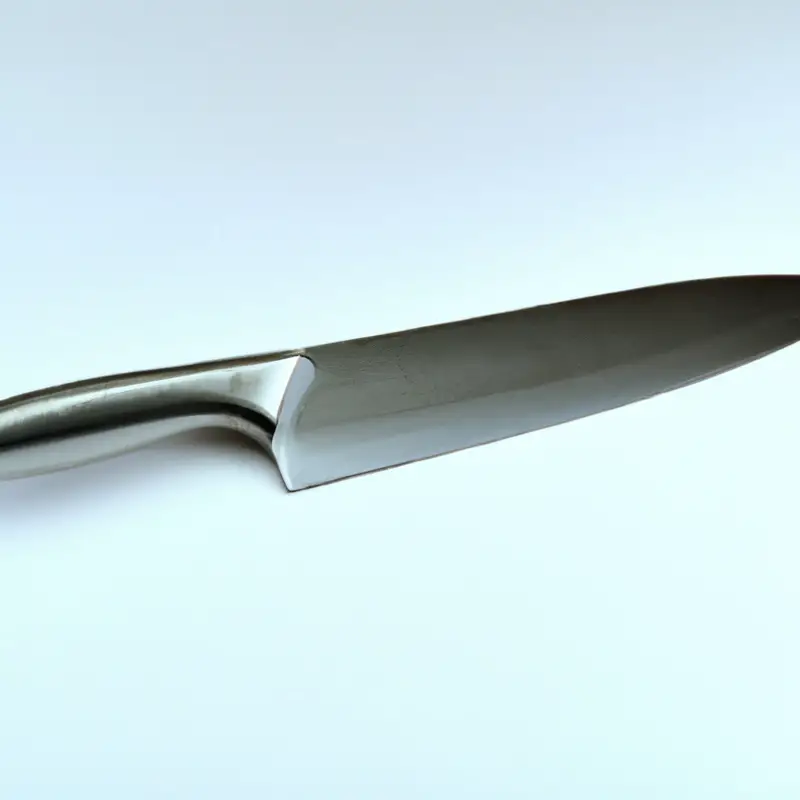
Benefits of using a serrated knife for cutting frozen food
Serrated knife’s ability to grip the surface of frozen food
A serrated knife’s ability to grip the surface of frozen food is its standout feature. The saw-like teeth on the blade hold onto the frozen surface, allowing for controlled and precise cutting.
With a serrated knife, you won’t have to worry about the knife slipping or sliding across the frozen food, making it much safer to use.
The teeth of the knife also help to break through the hard surface of frozen food without exerting excessive force. So if you’re looking for a reliable tool to tackle frozen food, a serrated knife is a great choice.
Serrated knife’s saw-like teeth for cutting through hard surfaces
A serrated knife’s saw-like teeth are highly effective for cutting through hard surfaces, such as frozen food. Unlike smooth-edged knives, the serrations provide more points of contact with the surface, allowing for better grip and stability.
The sharp, jagged edges of the teeth act like tiny saws, easily slicing through the tough texture of frozen food without slipping or sliding.
This makes it easier and safer to cut through frozen meats, vegetables, and other frozen ingredients. The saw-like teeth of a serrated knife are a key feature that makes it the ideal tool for tackling the challenge of cutting through hard surfaces.
Reduced risk of slip-ups while cutting frozen food
When it comes to cutting frozen food, slip-ups can be dangerous and frustrating. But using a serrated knife can help reduce the risk of accidents.
The saw-like teeth of a serrated knife provide better grip on the surface of frozen food, making it easier to cut through.
The jagged edges of the blade also help to prevent the knife from slipping off the hard surface. This reduces the chances of injuring yourself while cutting frozen food.
So, when you’re cutting frozen food, reach for a serrated knife for safer and more efficient slicing.
Techniques for using a serrated knife to cut through frozen food
Applying even pressure while cutting
When it comes to cutting frozen food with a serrated knife, applying even pressure is crucial. By doing so, you ensure a clean and precise cut through the hard surface.
To achieve this, grip the handle firmly and use a steady, controlled motion while guiding the knife through the food.
Avoid applying excessive force, as it can lead to uneven cuts or even damage the knife. With the right technique and even pressure, you’ll be able to cut through frozen food effortlessly.
Using a sawing motion with the knife
When it comes to cutting through frozen food with a serrated knife, using a sawing motion is key. This technique involves gently moving the knife back and forth in a sawing motion instead of applying excessive force.
By sawing through the food, you allow the serrated teeth of the knife to do their job, gradually breaking through the frozen surface.
It’s important to maintain a steady and controlled motion to avoid slip-ups or accidents. Remember to always practice caution and keep your fingers and hands away from the blade while cutting.
Ensuring proper knife maintenance for optimal performance
Proper knife maintenance is essential for optimal performance. Here are a few tips to keep your serrated knife in great shape:
- Hand wash your knife with warm, soapy water and dry it thoroughly.
- Avoid putting your knife in the dishwasher as the harsh detergents and high heat can damage the blade.
- Sharpen your knife regularly using a serrated knife sharpener to maintain its cutting power.
- Store your knife in a knife block or sheath to protect the blade from damage and prevent accidents.
By taking care of your serrated knife, you can ensure it stays sharp and ready for any frozen food cutting task.
Other tools that can be used to cut frozen food
Chef’s knife
A chef’s knife is a versatile tool that can also be used to cut frozen food. Its broad, sharp blade allows for precision and control while cutting through tough surfaces.
With a chef’s knife, you can slice through frozen meat, vegetables, and even fruits.
Its ergonomic handle provides a comfortable grip, reducing the risk of accidents. Regular maintenance, such as sharpening the blade, ensures optimal performance.
Keep in mind, however, that the success of cutting through frozen food with a chef’s knife depends on the quality of the knife and the technique used.
Cleaver
A cleaver is a heavy and sturdy knife that is specifically designed for cutting through tough or bone-in meat. It features a broad blade with a strong, thick spine that can handle the force required to cut through frozen food.
The weight and thickness of a cleaver make it ideal for breaking down large cuts of frozen meat or chopping through bones.
The wide blade also provides stability and precision while cutting through frozen food. However, it’s important to exercise caution and use proper technique to avoid any accidents or injuries when using a cleaver.
Precautions to consider while using a serrated knife
Avoiding excessive force that could damage the knife
When using a serrated knife to cut through frozen food, it’s important to avoid applying excessive force. Using too much pressure can damage the knife and potentially cause it to bend or break.
Instead, allow the knife’s serrated edges to do the work for you.
The saw-like teeth on the knife are designed to grip the surface of the food and cut through it with ease. By using a gentle sawing motion and letting the knife’s teeth do the work, you can avoid putting unnecessary strain on the knife and ensure its longevity.
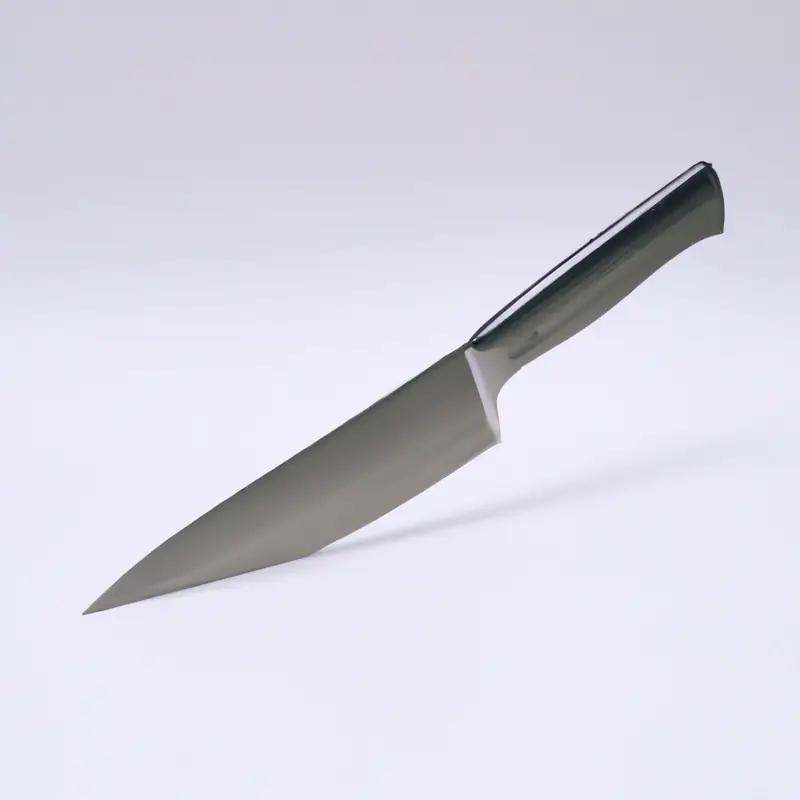
Being cautious of fingers and hands while cutting
When using a serrated knife to cut through frozen food, it is crucial to be cautious of your fingers and hands. The sharp teeth of the knife can easily catch on your skin if you’re not careful.
To avoid accidents, make sure to hold the food steady with a firm grip and keep your fingers away from the path of the knife.
Take your time and use controlled motions to ensure your safety.
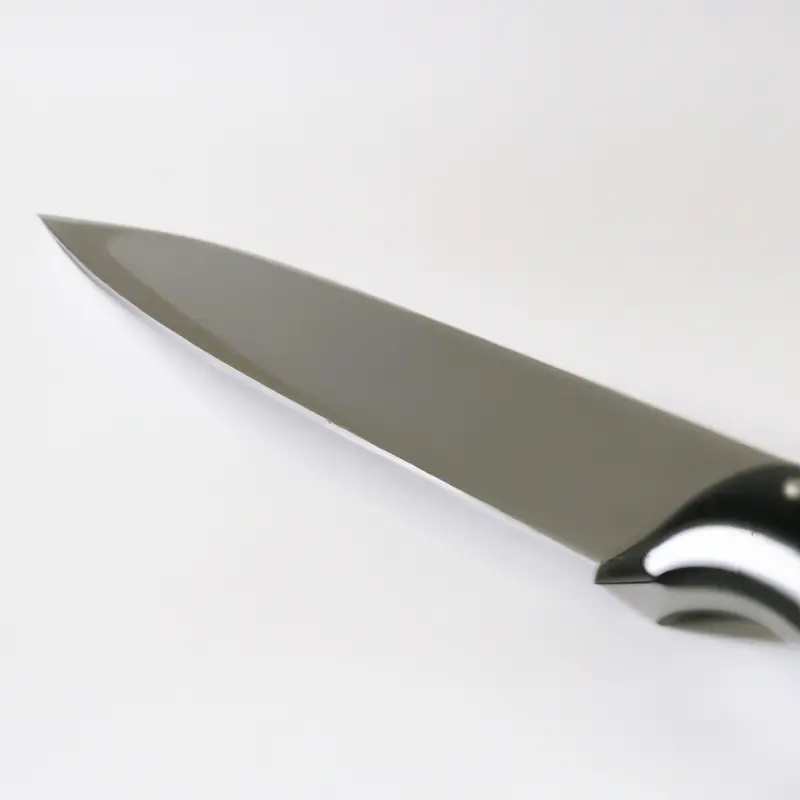
Final Verdict
A serrated knife is a valuable tool for cutting through frozen food due to its unique characteristics and benefits. The saw-like teeth of a serrated knife allow it to grip the surface of frozen food, while reducing the risk of slip-ups.
By applying even pressure and using a sawing motion, you can cut through frozen food with ease.
It is important to maintain the knife properly for optimal performance. While other tools like a chef’s knife or cleaver can be used, a serrated knife provides better control and precision.
However, precautions must be taken to avoid damaging the knife and to ensure safety.
Overall, using a serrated knife can enhance your cutting experience when dealing with frozen food.

